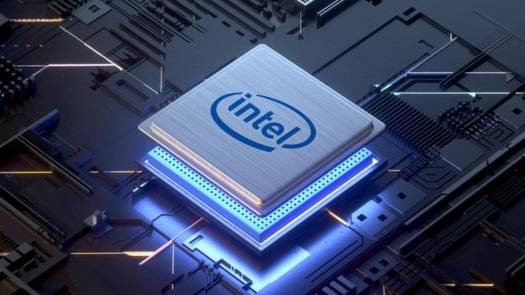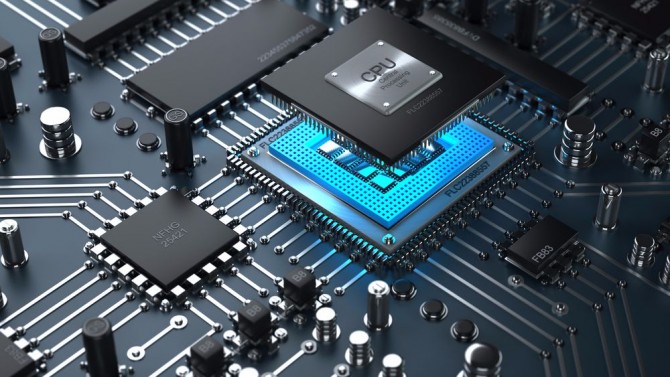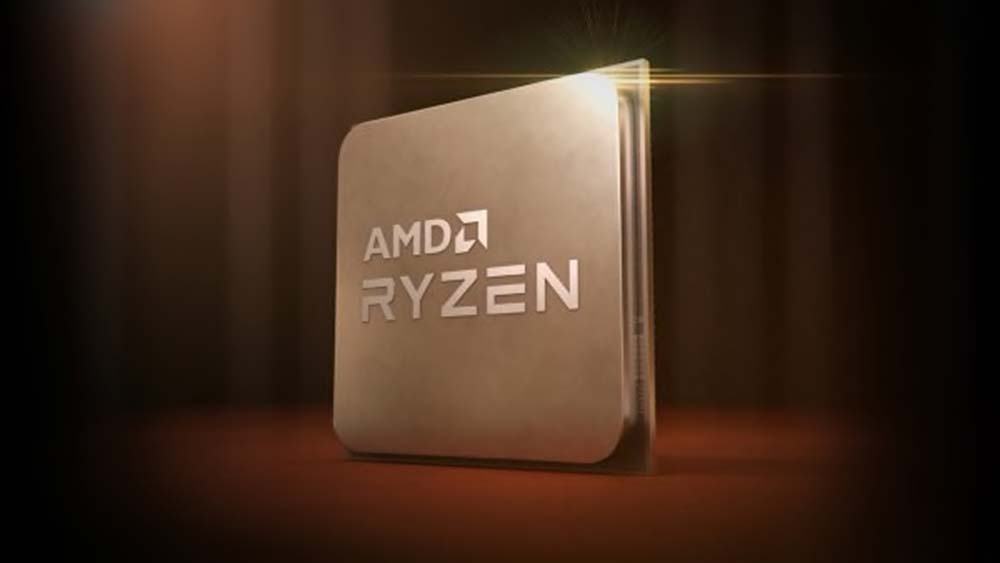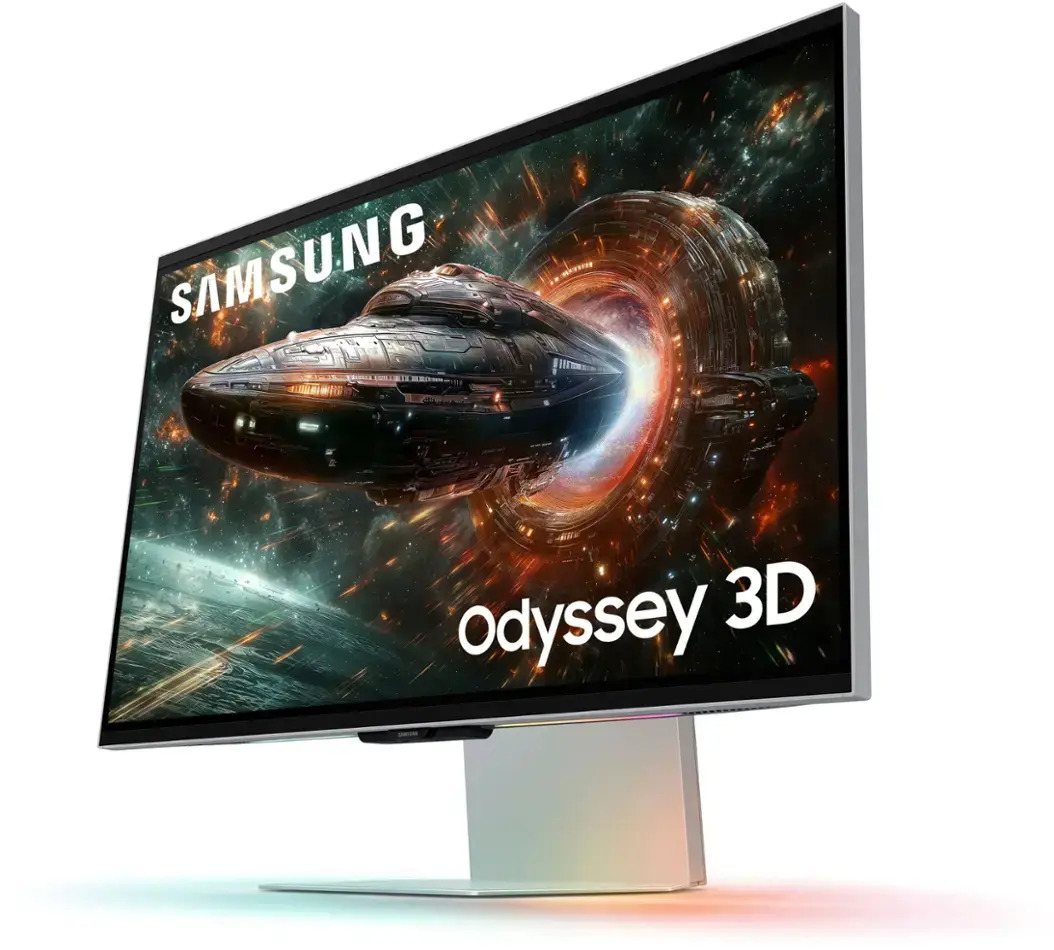Best laptop CPUs in 2021: AMD vs. Intel vs. Apple
Intel vs. AMD vs. Apple, which of these laptop processors is best?

A computer's processor is its brain, the component where most of the "thinking" happens. A faster CPU (central processing unit) lets you crunch spreadsheets, surf web pages, play games or edit photos faster, but a higher-wattage processor may also give you worse battery life.
When you're buying a laptop, you'll usually see the name of the processor listed prominently in every product description. However, just seeing the CPU model name, without any context, can be confusing. Is a laptop with a Core i7-1185G7 CPU faster than one with a Ryzen 7 5700U? And what about Core i9 chips or Apple's M1 processor? How much speed do you really need, anyway?

Most laptops today are powered by an Intel CPU, though there are several models that use AMD processors and some that use Qualcomm Snapdragon processors. Of course, Apple is transitioning its laptops to use custom M-series silicon. Even if you only look at Intel's lineup, there are more than two dozen different models you might see featured in a brand new notebook. Fortunately, learning the basics isn't too difficult.
TLDR; Which CPU Do I Need?
Why you can trust Laptop Mag
We detail all the different CPU types and their capabilities below, but if you just want the broad strokes, we've got a small cheat sheet below.
| Purpose | Recommended CPU | Sample SKUs | Typical Battery Life |
| Workstation / Gaming | Intel Core i5 / i7 H Series; Ryzen 7 / 9 H Series | Core i9-11900H, Ryzen 9 5980HS | 3 to 20 hours |
| Everyday Productivity w/ a Boost | Intel Core i7 U Series / AMD Ryzen 7 U series / Apple M1 | Core i7-1185H, Ryzen 7 5800H, Apple M1 | 7 to 17 hours |
| Everyday Productivity | Intel Core i5 U Series / AMD Ryzen Mobile 5 | Core i5-1155G7, Ryzen 5 5600H | 8 to 17 hours |
| Super Thin (Mediocre Performance) | Intel Core i3 | Core i3-1115G4, Ryzen 3 5300U | 5 to 9 hours |
| Budget Laptops, Low Performance | Intel Celeron, Pentium | Celeron G5905; Pentium Gold G6505 | 4 to 6 hours |
How to Read a CPU Model Name
When you're glancing at spec sheets, the name of the processor has a confusing jumble of numbers and letters.

The first word in the processor name is the brand, which is usually "Intel Core" but may also be labeled as Xeon, Celeron, Pentium or Atom. There's also "AMD Ryzen" and "AMD FX." Following the brand, you see the brand modifier, which is most often i3, i5 or i7, or for AMD, Ryzen 5, 7 or 9.
On Intel processors, the first number after the hyphen is the generation indicator; the latest generation is the 11th so the very newest CPUs have an 11. However, some laptops that are currently for sale haven't been updated to the latest platform yet and will still have a 10 (for 10th Gen) in the model number.
Then you'll see some combination of a two or a three-digit number significying the specific SKU for the chip. Following that is a G and a number, identifying the level of graphics. This varies from older chips that used a single letter (U, Y, H). The line is extremely important because it tells you roughly how much wattage this processor needs.
On AMD processors, the numbers and names are more straightforward. The company's new Ryzen 5000 CPUs are named Ryzen 5, which competes with Core i5 U series and Ryzen 7, which competes with Intel's Core i7 U series. There is also a Ryzen 9 to go against Intel's Core i9 chips.
AMD Ryzen vs. Intel Core vs. Apple M1
For many years, AMD processors only appeared in budget systems with mediocre performance and battery life. However, late in 2017, the company got its swagger back, releasing its new Ryzen Mobile platform. Then, in 2020, AMD made a huge leap by debuting its Ryzen 4000-series chips, many of which outperformed their Intel counterparts. Then, earlier this year, AMD released its Ryzen 5000 chips, like the one in the Asus Zephyrus G15.

At this point, we can confidently recommend that you don't pay extra to get an Intel Core i5 or Core i7 if there is a cheaper AMD-powered version because the Ryzen 4000 and Ryzen 5000-series chips are so similar in performance.
Other AMD chips that are non-Ryzen are less capable than a modern Core i5 or Core i7 and should only be considered when getting a very low price, rather than strong performance is your main concern.
As for Apple, it currently has a single custom laptop chip called the M1. So far, it's the most powerful mobile CPU in existence so long as your software runs natively on its ARM-based architecture. So far, the M1 is available in only the MacBook Air and 13-inch MacBook Pro but we expect to see an upgraded version of the chip (perhaps the M1X?) in the rumored 16-inch MacBook Pro and 14-inch MacBook Pro. If you're curious how the M1 stacks up against Intel chips, see our M1 vs. Intel comparison guide.
Core i3 vs. Core i5 vs. Core i7
Most Intel CPUs you'll see on laptops that cost over $400 are branded as Core i3, Core i5 or Core i7. As the numbering suggests, Core i3 is the slowest, i5 is in the middle, and i7 is fast and Core i9 is the fastest. Usually, the i5 model is more than adequate for a regular, everyday user who is not doing intensive graphics work, engineering, science or gaming.
Both Core i5, Core i7 and Core i9 support turbo boost, which allows the clock speed to go higher based on the task, and Hyper-Threading, which gives you two unique threads (aka virtual cores) for each core.
Which Intel and AMD Gen should I buy?
The latest is (almost) always greatest when it comes to CPU generations so we recommend looking for Intel 11th Gen and AMD Ryzen 5000-series chips. Again, 11th Gen Intel chips are denoted by the first two letters after the hyphen: Core i7-1185G7. For AMD, you know it's a Ryzen 5000 chip if the SKU number starts with a five. For example, AMD Ryzen 7 5700U.
Intel made great strides when it moved from 10th Gen to 11th Gen, especially when it comes to graphics performance with its Iris Xe chip, so we recommend getting the newest Intel processors. AMD, on the other hand, impressed us so much last year that an AMD 4000-series chip is still recommended at the right price.
CPU Specs: Cores, Hyper-Threading, Clock Speed
When you read about any individual CPU model, you'll see that, just like the laptop it powers, it has a complete set of specs. The most important specs are these:
- Cores: The processor within a processor, a Core is capable of working on one discrete task while the other core(s) does something else. Most laptop CPUs have four to eight, but some of the higher-performance models have eight cores. With 11th Gen Core, mainstream Core i5 and Core i7 laptops will now have four cores as do AMD Ryzen 5000 U-series chips.
- Hyper-Threading: A process where the CPU splits each physical Core into virtual Cores called threads. Most of Intel's dual-core CPUs use hyper-threading to provide four threads while its quad-core CPUs provide eight threads.
- Clock Speed: Measured in gigahertz, this is the number of cycles per second that the CPU can execute. A higher number is better, but this is far from the only factor in processor speed.
- Turbo Boost: Temporarily raises the clock speed from its base frequency to a higher one in order to complete a task more quickly. Most Core i9, Core i5 and i7 CPUs have this feature, but Core i3 models do not. The default frequency is listed as "processor base frequency" while the highest frequency is listed as "max turbo frequency."
- Cache: A small amount of RAM that lives directly on the CPU die, the cache stores frequently used information to speed up repetitive tasks. Most CPUs have between 1 and 4MB of cache.
- TDP (Thermal Design Power): The number of watts the CPU uses. More watts means better performance, but higher temperatures and greater power consumption.
- vPro or Ryzen Pro: A built-in remote management feature that's designed for corporate IT departments. Many business laptops have CPUs with vPro, but consumer systems do not.
Processor Lines (from Most to Least Powerful)
Choosing the right processor line is much more important than picking Core i5 over Core i3. Intel has a few main lines, each of which has its own set of Core i3s, i5s and i7s. Each line has a different TDP (Thermal Design Power), ranging from 7 watts all the way up to 45 watts for an H series.
A higher TDP means speedier processing, but more heat and energy use. However, just because a processor has a really low TDP, that doesn't mean laptops that use it will have longer battery life. For example, some systems we've tested with 9-watt CPUs have had below-average battery life, because they also had low-capacity batteries or power-hungry screens.
Xeon W: High-End Workstations Only
Good For: Engineering, Research and Professional Animation
Bad For: Battery Life, Affordability, Weight
For the very highest-end mobile workstations, there's Intel's Xeon W processor. Laptops with this processor inside are capable of doing more calculations so they can develop 3D animations or run complex simulations for someone like a medical researcher or an engineer. Xeon W processors have a 35-125W TDP, six or eight physical cores and come with both hyperthreading and turbo boost. Don't expect great battery life or low prices.
The latest Xeon processors, which now have 11th Gen architecture, are the Intel Xeon W-11855M and W-11955M. Since they're made for business, all Xeon processors have vPro management technology built in.
H Series: Six-Core, High Performance
Best For: Gamers, Creative Professionals, Power Users
Bad For: Portability, Affordability, Battery Life
If you're a power user or gamer, a laptop with an H processor is probably your best choice. H Series processors have six or eight cores instead of the four you'll find on most other Intel CPUs. H-series processors also have a TDP of 45 watts, which means that the laptops holding them are either going to have poor battery life or large batteries. Because they generate more heat than U series chips, you won't find H CPUs in super-light or thin laptops.
You may see processors labeled as either H, HQ or HK. H and HQ are standard while the HK denotes a processor that has been unlocked for overclocking. You'll only find those in high-end gaming laptops.
| Common H Series CPUs (4 cores) | ||||||
| Model | Base Clock | Turbo | Cache | GPU | Cores/Threads | vPro |
| Core i9-11980HK | 3.3 GHz | 4.5 GHz | 24MB | Intel UHD | 8/16 | No |
| Core i7-11900H | 2.1 GHz | 4.4 GHz | 24MB | Intel UHD | 8/16 | No |
| Core i7-11800H | 1.9 GHz | 4.2 GHz | 24MB | Intel UHD | 8/16 | No |
| Core i5-11400H | 2.2 GHz | 4.1 GHz | 12MB | Intel UHD | 6/12 | No |
| Core i5-11260H | 2.1 GHz | 4.0 GHz | 12MB | Intel UHD | 6/12 | No |
| Core W-11955M | 2.1 GHz | 4.5 GHz | 24MB | Intel UHD | 8 | Yes |
| Core i9-11950H | 2.1 GHz | 4.5 GHz | 24MB | Intel UHD | 6/12 | Yes |
| W-11855M | 2.6 GHz | 4.4 GHz | 18MB | Intel UHD | 6/12 | Yes |
| Core i7-11850H | 2.1 GHz | 4.3 GHz | 24MB | Intel UHD | 4 | Yes |
| Core i5-11500H | 2.4 GHz | 4.2 GHz | 12MB | Intel UHD | 6/12 | Yes |
U Series: Everyday Performance
Good For: Productivity, Content Consumption, Battery Life
Bad For: Gaming, Professional Animation
If you're looking for a "typical" laptop experience with solid performance and the possibility of good battery life, then an Intel U Series is for you. In particular, a Core i5 U-series CPU such as the Core i5-1135G7 should be more than adequate for most everyday users, whether they are consumers who want to surf the web or business users who need to edit spreadsheets. There is a reason the HP Envy 13 is the best value laptop on the market.
As of spring 2021 many mainstream and business laptops are shipping with Intel 11th Gen Core chips which come with four cores and 8 threads.
Most U Series processors have a TDP of 12-28W, which is the sweet spot between solid performance and good battery life, but does require active cooling in the form of a fan. There are a few U series CPUs with 28-watt TDPs, though only a handful of laptops use them. With a large battery and a power-efficient screen, U series laptops can get well over 10 hours of endurance with some high-end systems getting closer to 20 hours.
A number of U Series laptops feature Iris Xe graphics processor onboard. Iris Xe delivers significantly better 3D graphics performance than the base-level Intel UHD graphics.
| Common Intel U Series CPUs (2 cores, 4 threads) | |||||
| Model | Base Clock | Turbo | Cache | TDP (w) | GPU |
| Core i7-1195G7 | 2.9 Ghz | 4.6 Ghz | 12MB | 12-28W | Iris Xe |
| Core i7-1185G7 | 3.0 GHz | 4.3 GHz | 12MB | 12-28W | Iris Xe |
| Core i7-1165G7 | 2.8 GHz | 4.1 GHz | 12MB | 12-28W | Iris Xe |
| Core i5-1155G7 | 2.5 GHz | 4.3 GHz | 8MB | 12-28W | Iris Xe |
| Core i5-1145G7 | 2.6 GHz | 4.0 GHz | 8MB | 12-28W | Iris Xe |
| Core i5-1135G7 | 2.4 GHz | 3.8 GHz | 8MB | 12-28W | Iris Xe |
| Core i3-1125G4 | 2 GHz | 3.3 GHz | 8MB | 12-28W | UHD |
| Core i3-1115G4 | 3 GHz | 4.1 GHz | 6MB | 12-28W | UHD |
Y Series (UP4): Fanless Designs, Mediocre Performance
Good For: Portability, Fanless Design, Light Productivity
Bad For: Battery Life, Serious Number Crunching
When you're shopping for a laptop, be wary of the Y series (now called UP4), which you may see branded with Core i5 / Core i7 . Intel Y Series processors have a very-low TDP of 7 watts, which allows manufacturers to use them in fanless, super-thin laptops. Unfortunately, most of those laptops also have low-capacity batteries or high-powered screens so they actually end up with worse battery life than competitors with more powerful U-series (UP3) processors.
| Common Intel Y Series CPUs (2 cores, 4 threads) | ||||
| Model | Base Clock | Turbo | Cache | GPU |
| Core i7-1160G7 | 1.2 GHz | 3.6 | 12MB | Iris Xe |
| Core i5-1130G7 | 1.1 GHz | 3.4 GHz | 8MB | Iris Xe |
| Core i3-1120G4 | 1.1 GHz | 3 GHz | 8MB | UHD |
| Core i3-1110G4 | 1.8 GHz | 3.9 GHz | 6GB | UHD |
Celeron / Pentium: For Those Who Don't Care
Good For: Web Surfing, Saving money
Bad For: Gaming, Serious Productivity, Video Editing
If you're looking at a laptop that costs between $200 and $400, there's a good chance it has an Intel Celeron or Pentium series CPU. These budget-minded processors deliver performance that's just good enough for web surfing, email and light productivity. Celeron chips are very common in Chromebooks, because Google's browser-based OS doesn't require as much horsepower as Windows. If you're buying a Windows laptop, get one with Celeron / Pentium only if price is a primary concern. One excellent example is the Microsoft Surface Go, which uses an Intel Pentium Gold processor instead of the Intel Core chips found in the Surface Laptop 4 or Surface Pro 7.
| Common Celeron / Pentium Series CPUs | ||||||
| Model | Base Clock | Turbo | Cache | GPU | Cores | TDP |
| Pentium Gold G6506 | 4.2 GHz | N/A | 4MB | Intel UHD Graphics 630 | 2 | 35W |
| Pentium Gold G6405 | 4.1 GHz | N/A | 4MB | Intel UHD Graphics 610 | 2 | 58W |
| Celeron G5905 | 3.5 GHz | N/A | 4MB | UHD 610 | 2 | 58W |
| Celeron G5925 | 3.6 GHz | N/A | 4MB | UHD 610 | 2 | 58W |
Atom: Good Battery Life, Weak Performance
Good For: Saving Money, Long Battery Life, Light Weight
Bad For: Multitasking, Serious Productivity
Intel's cheapest processor line and largely on the way out, Atom appears in super-cheap Windows laptops or tablets. Almost all Atom CPUs have four cores and are extremely low power, allowing them to have excellent battery life, but the lowest level of performance. We recommend that you buy an Atom-powered laptop only as a secondary device for an adult or a primary for children. Atom is good enough for surfing the web and watching videos but struggles with content creation and productivity tasks. Most current-generation cheap laptops now use Celeron chips rather than Atom so you'll probably find Atom only on older systems.
| Common Atom Series CPUs (4 cores, 4 threads) | Row 0 - Cell 1 | |||
| Model | Base Clock | Turbo | Cores | Cache |
| Atom C3338R | 1.8 GHz | 2.2 GHz | 2 | 4MB |
| Atom C3758R | 2.4 GHz | N/A | 8 | 2MB |
| Atom C3558R | 2.4 GHz | N/A | 4 | 2MB |
Integrated Graphics
All Intel and AMD laptop CPUs come with built-in graphics processors (GPUs). On most Core i3/i5/i7/i9 CPUs of any line, these GPUs are named Iris Plus or Iris Xe, or AMD Radeon. For higher-end 11th Gen Intel processors, the integrated graphics is called Iris Xe, which is significantly faster but still no much for discrete graphics chips from Nvidia and AMD.
The integrated GPUs are right on the CPU die so laptop manufacturers can't mix and match them. A Core i7-1195G7 CPU will always come with the leading Iris Xe graphics while a weaker Core i3-1125G4 is stuck with Intel UHD graphics.
Generally speaking, integrated GPUs are good enough for productivity, web surfing, video playback and either casual gaming or gaming at low settings. If you want to do high-res video editing, professional animation or serious gaming, you need a discrete GPU.
Other Components Matter Too
It's important to remember, though, that the CPU is not the only determinant of performance when shopping for the best laptop, and that even the slowest CPUs can provide a decent user experience when paired with other good components. For most people, picking a Solid State Drive over a hard drive will make their computers a lot more responsive than paying extra to get a Core i7 rather than a Core i5. And for graphics performance, having a powerful discrete GPU (graphics processing unit) is even more important than having the fastest CPU. If you're curious about the latest graphics, see our coverage on Nvidia RTX 30-series and AMD Radeon 6000M series graphics cards.
Laptop Guide
- Laptop Buying Guide: 8 Essential Tips
- The Best & Worst Laptop Brands
- Laptop Tech Support Showdown: Undercover Report
- Should I Buy a Chromebook? Buying Guide and Advice
- Laptops with the Longest Battery Life
- Chromebooks vs. Windows 10 Laptops: What Should You Buy?
- Why You Shouldn't Buy a Touch-Screen Laptop
- Out of the Box Tips: Set Up Your New Laptop Like a Pro
- The Best Time to Buy a Laptop
- Chromebook vs. Tablet: Which Should You Buy?
- Laptop Buying Tips for Students
- 10 Key Features to Look for in Your Laptop
- How to Buy a 2-in-1 Laptop Hybrid
- USB Type-C FAQ: Everything You Need to Know
- How to Get Rid of Your Old Laptop
- Laptop Warranties: What They Cover
- Which Laptop Features Are Worth the Money?
- Gaming Laptop Buying Guide: Find the Right Rig
- 10 Reasons Why Consumers Should Buy Business Laptops
- Which MacBook is Right for You?
- 5 Things to Look For in Your Next Laptop Keyboard
- How to Configure Your Laptop: Specs That Matter
- Which Graphics Card Do You Need?
- The Perfect Laptop? Here’s What It Should Have
- Why 78 Percent of Laptop Screens Suck
- A Guide to Computer Ports and Adapters
- 13 Ways to Make a Slow Laptop Faster
- How to Tell If You Can Upgrade Your Laptop
- Laptop Locks Guide: Do You Need One?
- 10 Features You Can Skip to Save Money
Stay in the know with Laptop Mag
Get our in-depth reviews, helpful tips, great deals, and the biggest news stories delivered to your inbox.
Phillip Tracy is the assistant managing editor at Laptop Mag where he reviews laptops, phones and other gadgets while covering the latest industry news. After graduating with a journalism degree from the University of Texas at Austin, Phillip became a tech reporter at the Daily Dot. There, he wrote reviews for a range of gadgets and covered everything from social media trends to cybersecurity. Prior to that, he wrote for RCR Wireless News covering 5G and IoT. When he's not tinkering with devices, you can find Phillip playing video games, reading, traveling or watching soccer.

